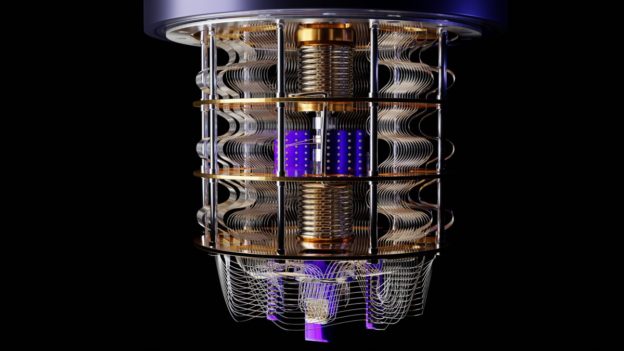The era of quantum computing has only just begun. The pace of innovation in this nascent, emerging space is simply remarkable, experts say, especially as companies and governments around the world increase both their interest and investment in the technology. While the people working in QC (quantum computing) believe it will transform the future of computing, no one knows for sure exactly how or when, because there is simply not enough known about what today’s quantum computers can actually do. And despite its promise, quantum currently has limited applications, and only a handful of these applications are moving past research into real-life scenarios. However, with all the investment and startup activity in the quantum space, it’s safe to assume that it will reshape computing, and it may do so sooner than expected.
Alan Baratz, CEO of D-Wave, points to a study from Hyperion Research, which found that more than 80% of responding companies plan to increase quantum commitments in the next 2-3 years, and one-third of those companies say they will spend more than $15 million annually on quantum computing efforts. Baratz says quantum annealing systems are already helping businesses tackle real-world optimization problems—for instance, by addressing supply chain strains, industrial manufacturing processes, traffic routing optimization, and more. “The accelerated adoption of quantum computing comes at a time when businesses are facing difficult economic constraints and are looking for solutions that help reduce costs, drive revenue, and improve operational effectiveness,” Baratz explains.
The Current State of Quantum
Despite some availability for helping businesses tackle real-life optimization problems, quantum has a long way to go. Mack Kira, professor of physics, electrical engineering, and computer science at the University of Michigan, co-director of the Quantum Research Institute, and director of the Midwest Quantum Collaboratory, says the situation is very much analogous to the vacuum-tube era for computing. “The quantum computers are still laboratory-sized ‘servers’ with only a few breakthrough demonstrations under the belt,” Kira says. “In other words, they are not ready yet to be deployed to every arena of technology. For classical computers, it required the innovation of semiconductor transistor, integrated circuit, and decades of still-ongoing integration and scaling efforts to realize the current stage of applications, including AI (artificial intelligence).”
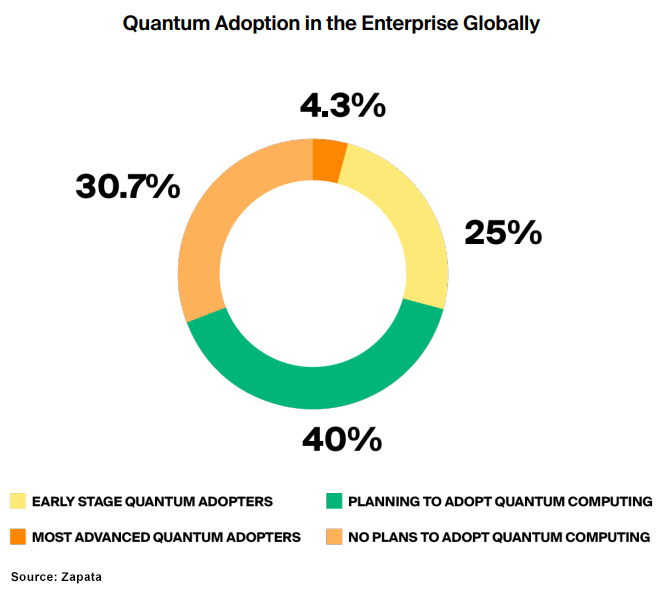
Kira expects a similar scale of technology push will be needed to truly unlock the full potential of quantum computers and the broader development of QISET (quantum information science, engineering, and technology) that could deliver incredibly fast, energy efficient, secure, and sensitive gadgets. He says there are a few application directions that are emerging and gaining momentum thanks to QISET advancements, including optimization of complex logistics problems, design of new chemical compounds, and quantum sensing to detect the classically impossible.
Michael Cusumano, deputy dean and professor of management in MIT’s Technological Innovation, Entrepreneurship, and Strategic Management Group, similarly likens the current quantum industry to the computer industry around the mid-20th century. However, he says: “(It’s) possibly evolving a bit more quickly, since there are now thousands of researchers and hundreds of companies, including many startups, involved in pushing forward the technology and different applications.”
Cusumano points to applications like simulation and optimization and quantum information (cryptography) as examples of those that are currently emerging. “For example, researchers are making progress in optimization of complex logistical problems—lots of possible outcomes with a relatively small number of inputs—or of complex processes, like protein folding in drug discovery,” he explains.
Cusumano looks forward to quantum’s potential to increase computer power, while also using less energy. “Exponential increases in computer power are always exciting, because they promise new capabilities for solving problems not currently solvable,” he says, adding: “Quantum computers should be able to solve certain problems with much less use of power than current digital computers; however, the range of applications is very limited. Quantum computers might also provide logistical or optimization solutions for areas that impact the environment, such as energy usage.”
Investments in a Quantum Future
Bill Genovese, CIO advisory partner at Kyndryl, says the funding for quantum-related research comes largely from the public sector, but the private sector is also getting involved. “China announced plans to invest $15 billion in quantum computing, the European Union $7.2 billion, the U.S. $1.3 billion, the U.K. $1.2 billion, and India and Japan $1 billion each,” Genovese says. “The private sector is (also) increasingly engaged. Investments in quantum computing startups have surpassed $1.7 billion in 2021, more than double the amount raised in 2020, according to McKinsey.”
Genovese says the number of software-only startups is increasing faster than any other segment of the quantum-computing market. “In 2023, progress in quantum computing will be defined less by big hardware announcements than by researchers consolidating years of hard work, getting chips to talk to one another, and shifting away from trying to make do with noise as the field gets ever more international in scope,” he says.
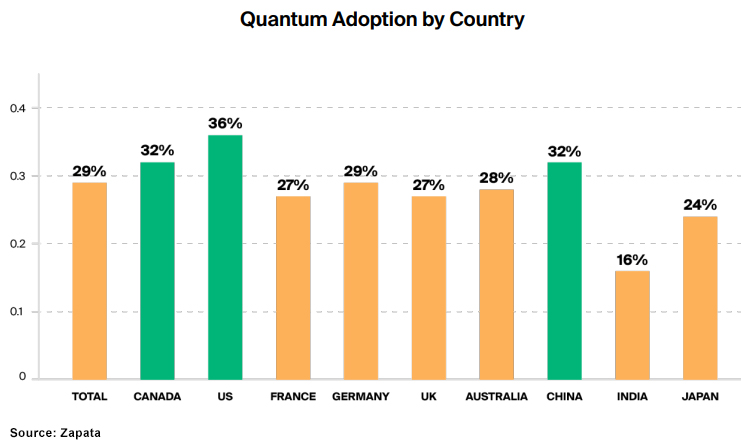
For instance, a recent survey of French business executives by Capgemini found 23% are working with quantum technologies or planning to do so. “One in 10 expect quantum computing to be available for use in at least one major application within three years,” Genovese adds. “(And) 28% of companies surveyed by quantum software startup Zapata reported they have allocated a budget of $1 million or more for quantum investments. 69% of the companies surveyed say they have adopted or are planning to adopt quantum computing in the next year. Quantum-adopting enterprises are preparing on multiple fronts: 51% are identifying talent/building an internal team; 49% are experimenting and building proofs of concept; 48% are running experiments on quantum hardware or simulators; and 46% are building new applications.”
Daniel Gottesman, chair of theoretical computer science at the University of Maryland and a QuICS (Quantum Information and Computer Science) Fellow, says companies are investing in creating quantum hardware or software, and companies from a number of different industries are showing interest by looking into quantum computation to determine if it will be important for them. “The main experimental progress over the past few years is the ability to create larger and larger devices with more high-quality quantum bits—qubits,” he explains. “This is a pretty difficult engineering challenge, because there is a lot of control circuitry that has to be near the qubits to get them to behave the way you want them to.”
Despite all the investment, Gottesman says there are quite a few hurdles for quantum computing to overcome. “The thing that most concerns me moving forward is that while there has been a lot of progress in making more qubits, the leading designs haven’t made much progress towards better qubits, meaning ones with lower error rates,” he explains. “This is a problem because to get the full power of quantum computers, we will need to be able to correct hardware errors occurring during the computation, but we can only do this if the error rates are sufficiently low to start with. Otherwise, new errors occur faster than we can correct them.”
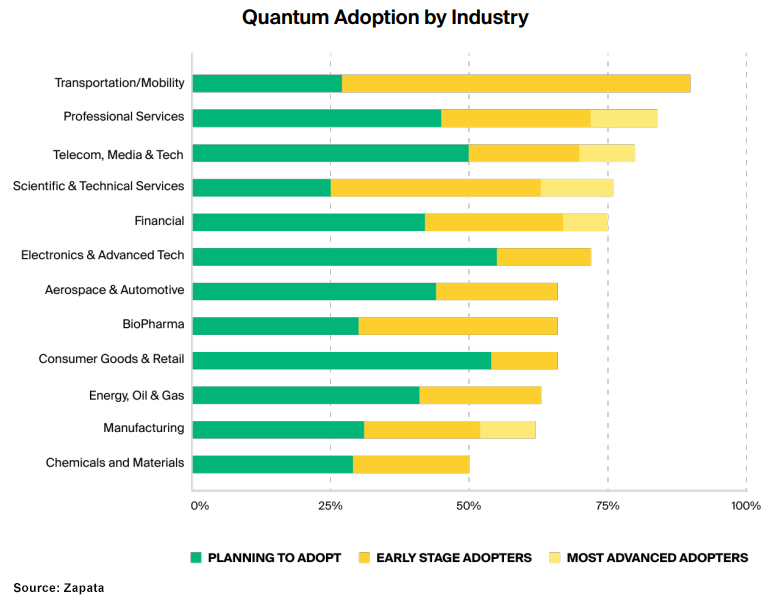
Gottesman says we need continued investment in basic research on quantum topics. “This is a field that is still a long way from being able to reach its full potential and there are many things we don’t know,” he explains. “We also need a continued investment in education to ensure a workforce that is capable of building and programming quantum computers.”
The University of Michigan’s Kira says many challenges remain to bring quantum computing out of the vacuum-tube era. “It has remained challenging to couple quantum computers, suppress or correct errors, integrate quantum technology for scaling and task optimization, and interfacing with classical computing,” he says. “Before these challenges are addressed, QISET solutions will not expand in importance in the same way semiconductor technology revolutionized information technology from 1950s onward.”
Kira adds to move forward, a broad range of QLIT activities is needed. “We are developing new quantum materials as the basis for quantum-light sources, detectors, and processors; profound understanding of quantum-information processes to systematically design the next-generation quantum gadgets; spectroscopies and devices to better control and integrate the quantum gadgets; and algorithms for QLIT technology with new operational principles,” he says. “And all this must be done holistically, because each of these aspects will support and challenge one another. So, investments to larger collaborative teams must be made in order to discover future directions for quantum and semiconductor technology alike.”
5 Tech Breakthroughs and Hurdles in Quantum Computing
Bill Genovese, CIO advisory partner for Kyndryl, explains five breakthroughs and hurdles that paint a picture of the current quantum space.
- Quantum Supremacy: The objective of quantum supremacy is to demonstrate that a quantum computer can solve a problem that no classical computer can solve in any reasonable length of time, despite the usefulness of the problem. Achieving this goal demonstrates the power of a quantum computer over a classical computer in complex problem-solving. Google has achieved this.
- Quantum Teleportation: Quantum teleportation, the cornerstone for building a quantum internet, allows for transferring one quantum state from one physical location to another without physically moving the quantum state itself. It has a wide range of applications, from secure quantum communication to distributed quantum computing. The 2022 Nobel Prize in Physics was awarded to three scientists—Alain Aspect, John Clauser, and Anton Zeilinger—for work that demonstrated quantum entanglement and showed it could be used to teleport quantum information from one photon to another.
- Topological Quantum Computing: Topological quantum computing is a theoretical model that uses quasiparticles called anyons (quasiparticles in two-dimensional space) for encoding and manipulating qubits, and developments in this area of research are vital for building practical and scalable quantum computers. Topological quantum computing is more resistant to errors due to its inherent redundancy and topological protection, making it a promising candidate for fault-tolerant quantum computing. Most topological quantum computing research is theoretical; currently, no studies provide substantial experimental support for the same.
- Quantum Error Correction: The most pressing concern with quantum computers is their sensitivity to errors induced by environmental noise and imperfect control. This hinders their practical usability, as data stored on a quantum computer can become corrupted. Classical error correction relies on redundancy—i.e., repetition. However, quantum information cannot be cloned or copied due to the no-cloning theorem (which states that it is impossible to create an independent and identical copy of an arbitrary unknown quantum state). Therefore, a new error correction method is required for quantum computing systems. Numerous companies have experienced breakthroughs here.
- Fault-Tolerant Quantum Computing: The detection and elimination of errors is critical to developing realistic quantum computers. Fault-tolerant quantum computing is a method to ensure that these errors are detected and corrected using a combination of QECCs (quantum error-correcting code) and fault-tolerant gates. This ensures errors arising during the computations don’t accumulate and render them worthless. The biggest challenge in achieving fault-tolerant quantum computing is the need for many qubits. However, two independent theoretical studies published in 1998 and 2008 proved that fault-tolerant quantum computers can be built. This has come to be known as the threshold theorem, which states that if the physical error rates of a quantum computer are below a certain threshold, the logical error rate can be suppressed to arbitrarily low values.
MIT’s Cusumano says new computing platforms are being held back by hardware design and performance, as well as applications. “Noise and errors due to quantum fluctuations and disturbances is slowing down progress for general-purpose quantum computers, but we are making progress,” he says. “I am most excited by the development of new SDKs (software development kits) that allow programmers to use conventional programming languages to build new applications.”
D-Wave’s Baratz says one thing holding the space back is a lack of clarity around quantum’s commercial readiness. “There are two primary approaches to quantum computing—quantum annealing and gate model,” he says. “While you may have heard that quantum computing won’t be ready for years, that long-range timeline refers only to the gate-model approach. The truth is that practical quantum solutions using annealing systems are being used right now, helping organizations solve some of their biggest challenges, and that is incredibly significant.”
With quantum annealing, Baratz says the potential of this technology is no longer hypothetical. It is reality. “The age of commercial quantum is here now, and that is what I am most excited about,” he adds. “Quantum has moved out of the lab and into the boardroom. It’s no longer just a side project that R&D (research and development) teams play with, but rather (it) has captured the attention of business decisionmakers and governments faced with increasingly challenging and complex problems that require faster time-to-solution.”
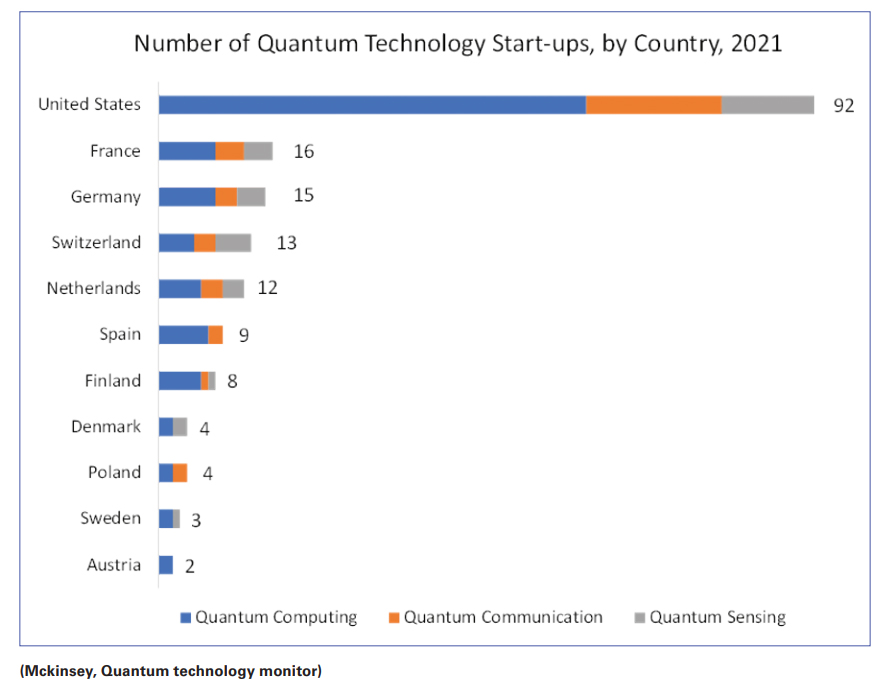
While Baratz believes almost every industry can benefit from quantum annealing technology, and they can start to reap said benefits immediately, he also sees the need for continued investments in areas like hardware and talent. “Systems today, especially quantum annealing systems, can tackle real-world problems, but they have not yet reached their full potential. Therefore, investment in hardware advancement, annealing and gate-model systems alike is needed,” he concludes. “Lastly, investment in talent is mandatory. We need people to not only build the systems and algorithms but to also provide education for those who will ultimately be the end users of the technology. This means we need to invest in education for not just physics and engineering, but also data science, computer science, algorithm development, cryogenics, and more. For end users, there must be education on what the technology can do and what it can’t. Being able to identify problems that are best suited for today’s solutions and creating professional-services teams will help enterprises and governments utilize the technology to achieve objectives—whether they be sustainability, lowering costs, discovering new drugs, or driving efficiencies.”
Simply put, organizations of all sizes and categories, as well as governments, should be looking at quantum right now to best prepare for the future. Many investments are being made, there is a lot of startup activity, and there is a lot of interest. All this investment will help bring quantum out of its “vacuum-tube era” and into its true potential.
Links for Further Learning:
Want to tweet about this article? Use hashtags #IoT #sustainability #AI #5G #cloud #edge #digitaltransformation #machinelearning #quantum #quantumcomputing #DWave #Kyndryl #startups #investment
https://connectedworld.com/quantum-leaps-interest-and-investment-in-quantum-computing/?amp=1




